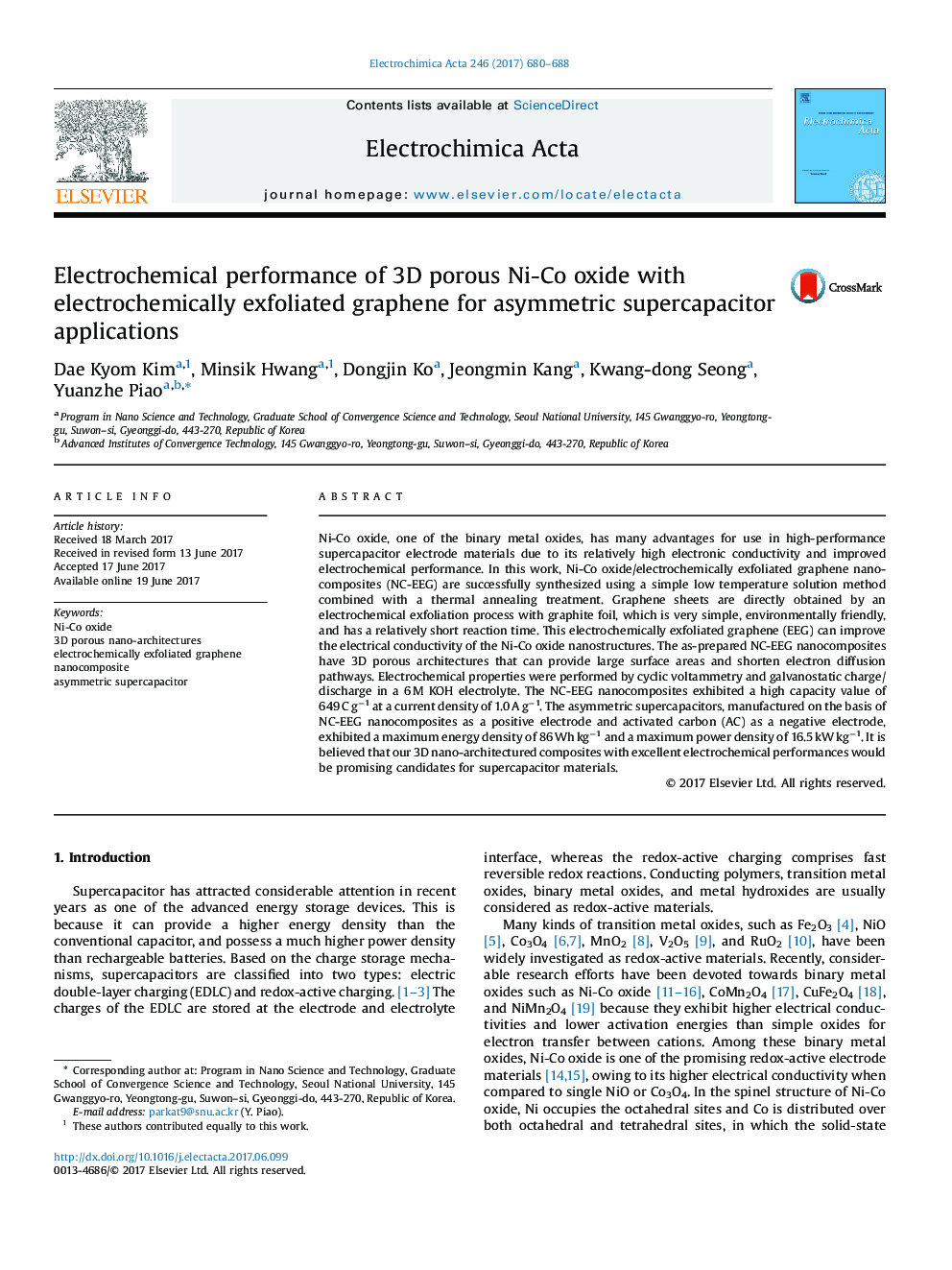| کد مقاله | کد نشریه | سال انتشار | مقاله انگلیسی | نسخه تمام متن |
|---|---|---|---|---|
| 6470576 | 1424111 | 2017 | 9 صفحه PDF | دانلود رایگان |

- A simple low temperature solution method was used for preparing NC-EEG.
- Graphene sheets were obtained by electrochemically exfoliation process.
- A high capacity of NC-EEG in a three-electrode system, as high as 649Â CÂ gâ1, was recorded.
- Asymmetric supercapacitor based on NC-EEG exhibited excellent energy density and power density.
Ni-Co oxide, one of the binary metal oxides, has many advantages for use in high-performance supercapacitor electrode materials due to its relatively high electronic conductivity and improved electrochemical performance. In this work, Ni-Co oxide/electrochemically exfoliated graphene nanocomposites (NC-EEG) are successfully synthesized using a simple low temperature solution method combined with a thermal annealing treatment. Graphene sheets are directly obtained by an electrochemical exfoliation process with graphite foil, which is very simple, environmentally friendly, and has a relatively short reaction time. This electrochemically exfoliated graphene (EEG) can improve the electrical conductivity of the Ni-Co oxide nanostructures. The as-prepared NC-EEG nanocomposites have 3D porous architectures that can provide large surface areas and shorten electron diffusion pathways. Electrochemical properties were performed by cyclic voltammetry and galvanostatic charge/discharge in a 6 M KOH electrolyte. The NC-EEG nanocomposites exhibited a high capacity value of 649 C gâ1 at a current density of 1.0 A gâ1. The asymmetric supercapacitors, manufactured on the basis of NC-EEG nanocomposites as a positive electrode and activated carbon (AC) as a negative electrode, exhibited a maximum energy density of 86 Wh kgâ1 and a maximum power density of 16.5 kW kgâ1. It is believed that our 3D nano-architectured composites with excellent electrochemical performances would be promising candidates for supercapacitor materials.
The paper reported the Ni-Co oxide/electrochemically exfoliated graphene nanocomposites with 3D porous nano-architectures (NC-EEG) using a simple low temperature solution method combined with a thermal annealing treatment. 3D porous architectures provide large surface areas and shorten electron diffusion pathways for high performance asymmetric supercapacitors.125
Journal: Electrochimica Acta - Volume 246, 20 August 2017, Pages 680-688